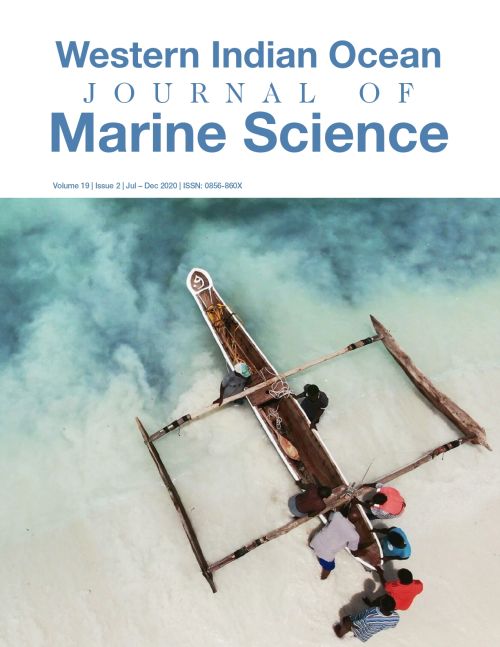Main Article Content
The trophic structure of fish in seaweed farms, and adjacent seagrass and coral habitats in Zanzibar, Tanzania
Abstract
Coral reefs, seagrasses and seaweed farms (Eucheuma denticulatum) are characteristic habitats in many parts of the coast of Zanzibar, Tanzania. However, information on trophic interactions, movements of fish, and variation in fish diet specialization between these habitats are scarce. The present study determined the trophic structure and the variation in diet composition of fish caught in (floating) seaweed farms, and in adjacent seagrass and coral reef habitats in Pongwe, Zanzibar. Fish were caught using traditional basket traps (dema) and gut contents of 392 fish were analyzed. A one-way Analysis of Similarities (ANOSIM) showed that there was a significant difference in the composition of prey items eaten by invertivores in different habitats (Global R = 0.109, p = 0.002.). There was no significant difference in the composition of prey items eaten by herbivores, invertivore-piscivores and omnivores (p > 0.05), likely due to movement of fish between these habitats for foraging. There was no significant difference in the relative proportion of trophic groups between the habitats (p > 0.05) except for herbivores (p < 0.05). Floating seaweed farms attract invertebrates and smaller fish, thus providing feeding grounds for predatory fish, and should be considered as ecologically important habitats as are coral reefs and seagrass beds.






